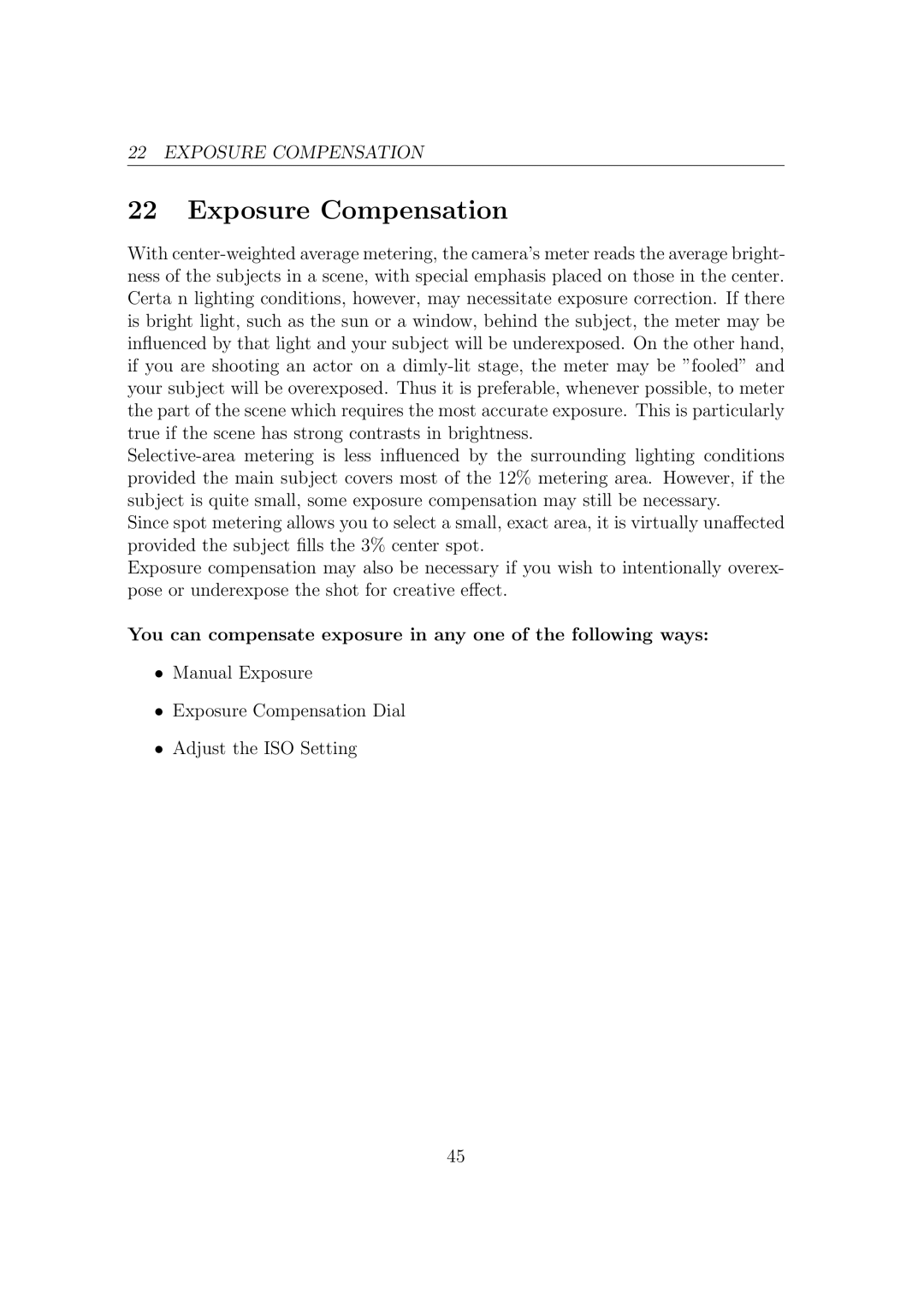
22 EXPOSURE COMPENSATION
22 Exposure Compensation
With center-weighted average metering, the camera’s meter reads the average bright- ness of the subjects in a scene, with special emphasis placed on those in the center. Certa n lighting conditions, however, may necessitate exposure correction. If there is bright light, such as the sun or a window, behind the subject, the meter may be influenced by that light and your subject will be underexposed. On the other hand, if you are shooting an actor on a dimly-lit stage, the meter may be ”fooled” and your subject will be overexposed. Thus it is preferable, whenever possible, to meter the part of the scene which requires the most accurate exposure. This is particularly true if the scene has strong contrasts in brightness.
Selective-area metering is less influenced by the surrounding lighting conditions provided the main subject covers most of the 12% metering area. However, if the subject is quite small, some exposure compensation may still be necessary.
Since spot metering allows you to select a small, exact area, it is virtually unaffected provided the subject fills the 3% center spot.
Exposure compensation may also be necessary if you wish to intentionally overex- pose or underexpose the shot for creative effect.
You can compensate exposure in any one of the following ways:
•Manual Exposure
•Exposure Compensation Dial
•Adjust the ISO Setting
